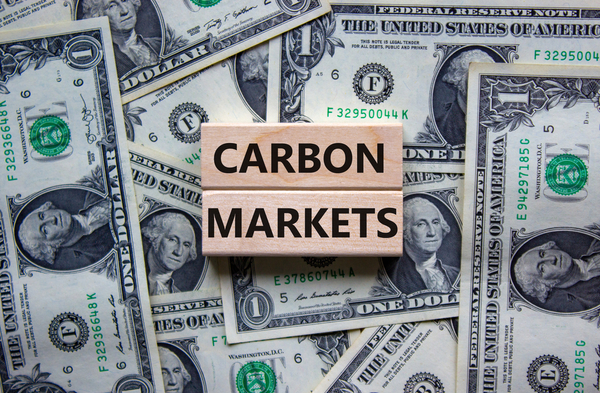The first half of 2022 has seen markets mired in continued supply chain issues driven by the pandemic, related lockdowns in China, and the geopolitical impacts of Russia’s war on Ukraine. U.S. markets have been particularly challenged by historic, persistent inflation and a rising rate environment alongside quantitative tightening by the Fed.
To say that markets have been volatile would be to state perhaps one of the most glaringly obvious things this year. It’s worth noting because at a time when it feels like so many of the traditional asset classes and inflation hedges have tumbled, bounced, struggled, or fallen off entirely, finding those gems of performance and stability can be meaningful.
Enter the carbon markets in 2022. The KraneShares Global Carbon ETF (KRBN), a fund that tracks the largest, most established carbon cap-and-trade markets globally, is currently trading about 30% up from this time last year, reported S&P Global. What’s more, the voluntary carbon market has matured and current renewable energy credits and nature-based avoidance credits are trading at approximately 74% more than they were last summer.
“Unlike cryptocurrency or Bitcoin, the carbon market is underpinned by existentially important intrinsic demand for the end use of the product – a carbon credit exists to be retired,” said Rich Gilmore, CEO of Carbon Growth Partners. “Our view is that there is a stable and growing demand for carbon credits to be used as an emissions reduction tool.”
In the current regime where energy is seeing a huge spike, the energy companies’ very profitability is driving stability for carbon markets. What’s more, the increasing commitments to net-zero emissions by industries in the coming months and years are set to cause an acceleration in carbon markets globally.
“The companies that have the biggest emissions are extremely profitable at the moment,” said Adam Raphaely, managing director of Mercuria Energy America. “If I think back to the financial crisis of ’08 when the [voluntary carbon] market was trying to get started, you had a lot of people without the means to meet their commitments, whereas now a lot of the largest emitters are very profitable and have meaningful commitments that are not reversible.”
The KraneShares Global Carbon ETF (KRBN) offers the first-of-its-kind take on carbon credits through cap-and-trade programs and is in a position to capture the rise in carbon allowance prices as emissions limits become more stringent globally and countries tackle the carbon crisis.
KRBN tracks the IHS Markit Global Carbon Index, which follows the most liquid carbon credit futures contracts in the world. This includes contracts from the European Union Allowances (EUA), California Carbon Allowances (CCA), and Regional Greenhouse Gas Initiative (RGGI) markets. North American pricing data is supplied by IHS Markit’s OPIS service, while European prices are supplied by ICE Futures Pricing.
KRBN carries an expense ratio of 0.78% and has nearly $1.1 billion in net assets.
The KraneShares Global Carbon Offset Strategy ETF (KSET) is the first U.S.-listed ETF offering investors exposure to the voluntary carbon markets. The fund is structured to offer global coverage of voluntary carbon markets by tracking carbon offset futures contracts comprised of nature-based global emissions offsets (N-GEOs) as well as global emissions offsets (GEOs) that trade via CME Group.
Projects that can be found within voluntary carbon markets include traditional approaches to carbon capture through reforestation and similar endeavors, as well as more recent, technology-driven ones such as direct air capture.
KSET is structured so that new markets will be included within the fund as they scale to size, and it carries an expense ratio of 0.79%.
For more news, information, and strategy, visit the Climate Insights Channel.

